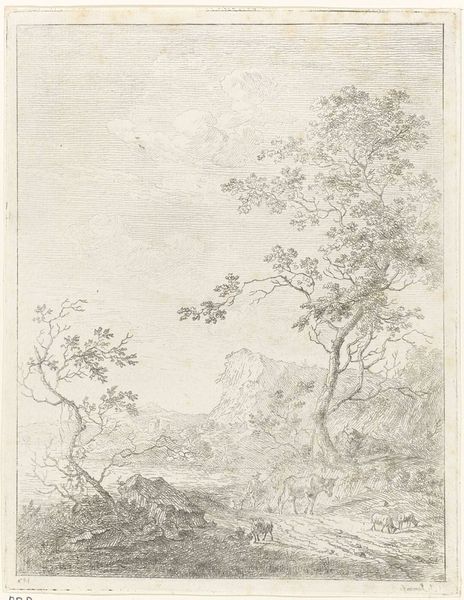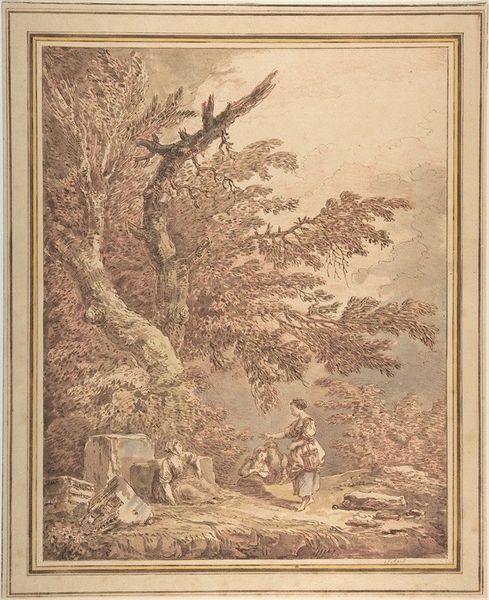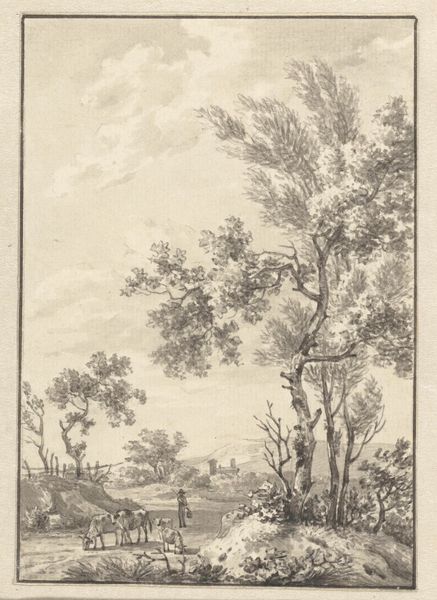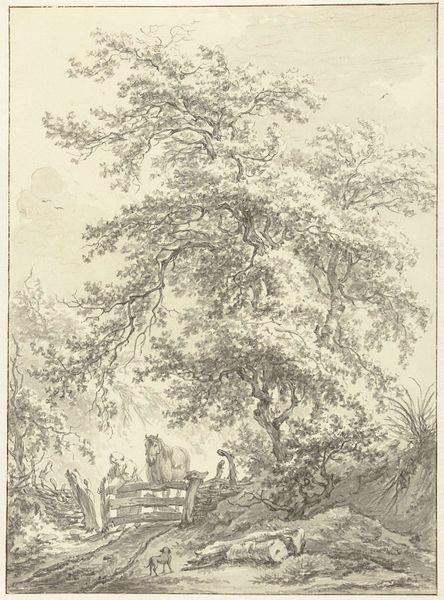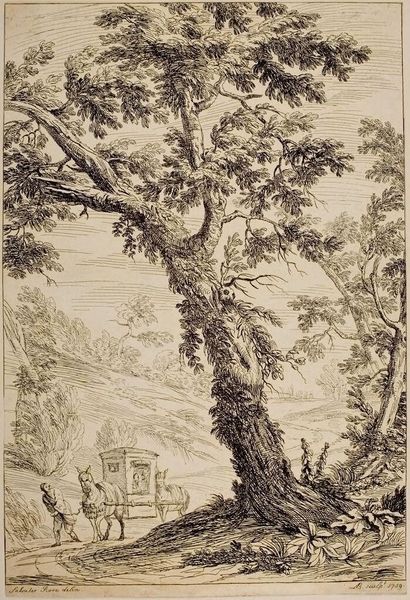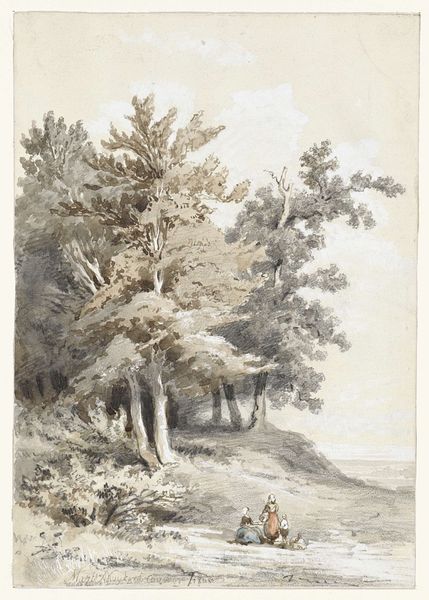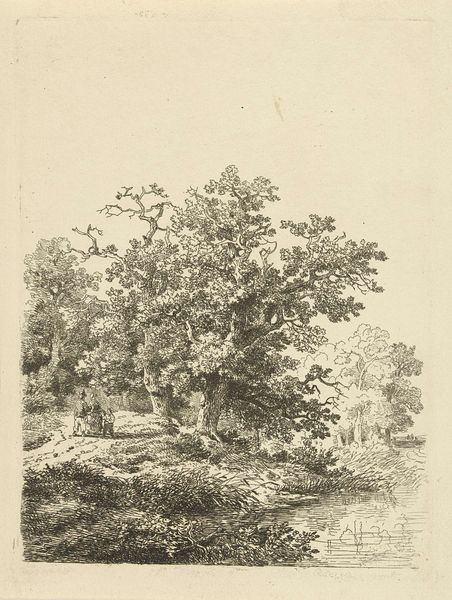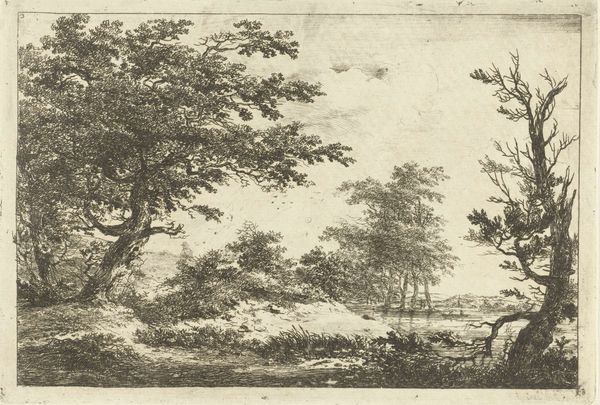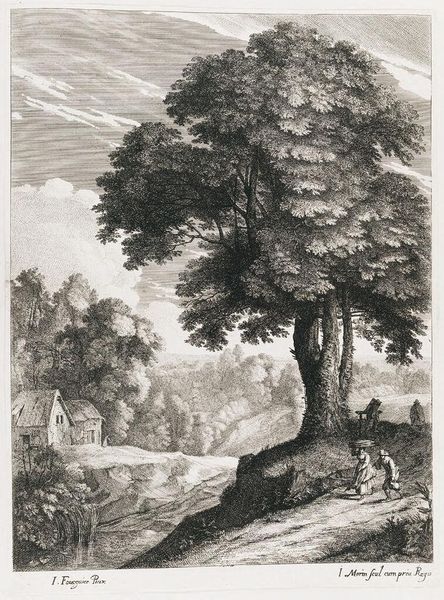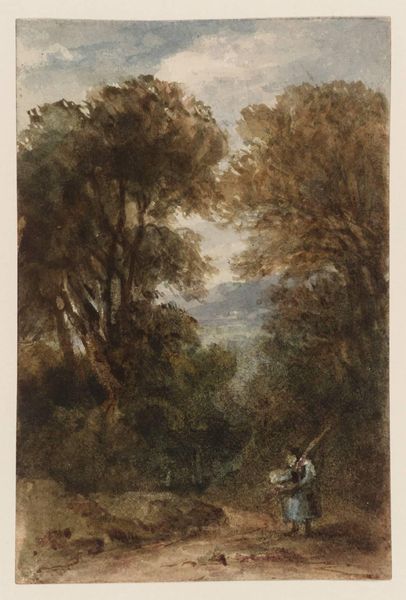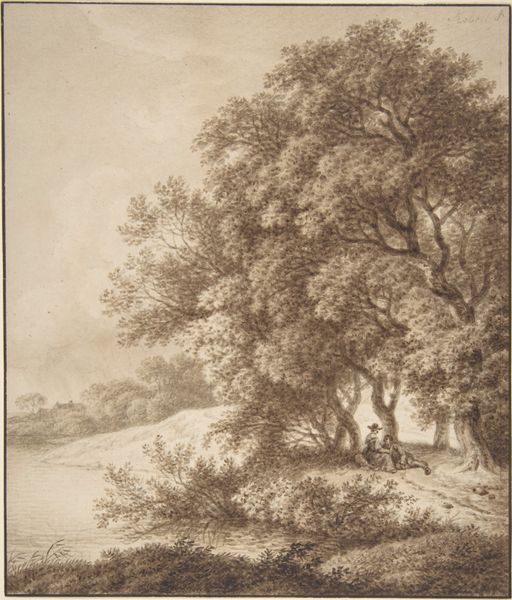
Dimensions: height 327 cm, width 117 cm
Copyright: Rijks Museum: Open Domain
These three wall hangings, depicting a Dutch landscape, were created by Jurriaan Andriessen in the 18th century. They’re made of paint on canvas, but don't let the apparent conventionality fool you. Consider the labor involved in creating such large-scale decorative works. The canvas would have been woven and stretched, requiring a significant amount of preparation before Andriessen even began to paint. The paint itself would have been mixed by hand, using pigments derived from various sources. And think of the skill required to depict such a detailed and evocative scene. Andriessen was part of a family of artists specializing in wallpaper and room decorations, blurring the boundaries between art, craft, and interior design. In a time before mass production, such hand-painted scenes were a luxury, bringing the beauty of the natural world into the homes of the wealthy. They remind us that art is not just about individual expression, but also about the social context in which it is made and consumed.
Comments
rijksmuseum about 2 years ago
⋮
From c. 1770 it became fashionable to cover the walls of rooms with painted wall hangings. With their idyllic scenes, they could transform a canal house room into an oasis. These three paintings (together with some missing ones) presented a continuous Dutch landscape, interrupted only by the room’s panelling, windows and doors. They were made for a room in the house at 22 Nieuwe Doelenstraat, Amsterdam.
Join the conversation
Join millions of artists and users on Artera today and experience the ultimate creative platform.
